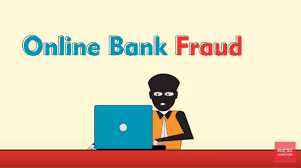Financial scams, including bank account fraud, have been around for quite some time. However, with the rise of the Internet and the increasing digitisation of information, these fraudulent activities have surged dramatically. This escalation has also led to a significant rise in the financial repercussions associated with such crimes. Reports indicate that since before the COVID-19 pandemic, costs linked to fraud have soared by around 10%. For businesses, this means that departments responsible for financial security are now grappling with an intensified threat landscape that places immense pressure on organisations.

Moreover, beyond the immediate financial implications, fraudulent activities can inflict lasting harm on a company’s reputation and its relationships with both current and prospective clients. Research indicates that the reputational damage caused by fraud can exceed 140% of the actual financial loss incurred from the fraudulent act itself. To navigate these treacherous waters more effectively and bolster their defences, financial departments must be vigilant about various types of banking fraud. Here are six key forms of banking fraud to keep an eye on as you work towards enhancing your organisation’s resilience against such threats.
If you’re interested in delving deeper into payment fraud specifics, we invite you to explore our complimentary study, 2022 Fraud Study—SAP Trustpair, which offers valuable insights.
The Association of Certified Fraud Examiners (ACFE) estimates that companies lose approximately 5% of their annual revenues due to fraudulent activities. Among various methods employed by perpetrators is accounting fraud—a deceptive practice manifesting in multiple forms. This particular type of bank fraud primarily affects loans issued to businesses. In many cases, companies manipulate their financial statements to create an illusion of robust profitability when they are actually facing insolvency issues. Banks may extend loans based on these misleading figures but ultimately find themselves unable to recover their investments.

A notorious instance highlighting this issue is the 2001 Enron scandal, in which the company artificially boosted its earnings while concealing significant losses through a network of shell corporations and falsified accounts. Another prominent example is Wirecard’s downfall in 2019—often referred to as Germany’s Enron—which involved nearly €2 billion in missing funds.
In recent years, the issue of money laundering has escalated, becoming one of the most challenging forms of bank fraud to detect. The United Nations reports that this illicit activity results in staggering losses amounting to $800 billion annually. At its core, money laundering involves disguising funds acquired through illegal means to make them appear legitimate. This process typically involves reinvesting these tainted assets into lawful ventures, effectively cleaning the money. Such fraudulent schemes can serve as a cover for extensive criminal enterprises, including terrorism and drug trafficking.
Various forms of money laundering exist, including tax evasion and fraud via fictitious invoices. Due to its complex nature, identifying instances of money laundering can prove exceptionally difficult. To safeguard your organisation from falling victim to such practices, it is crucial to adhere strictly to local regulations and implement a robust due diligence framework before establishing any new business partnerships. An even more effective strategy could involve utilising automated solutions like Trustpair that verify third-party financial information seamlessly. Trustpair’s innovative approach to fraud detection has already empowered 200 companies around the globe to defend themselves against potential fraudulent activities. If you want to learn more about how this solution works, don’t hesitate to reach out to one of our specialists!

On another front, if you work in investment banking or are affiliated with any financial institution where trading occurs, vigilance is essential when navigating your professional landscape—particularly regarding dishonest traders who may lurk within it. These unscrupulous individuals can engage in unauthorised transactions and manipulate their trading results to create an illusion of substantial profits when they are actually generating little or no revenue.
A notorious example highlighting this type of deception is the FTX scandal involving Sam Bankman-Fried (often referred to as SBF). In 2019, he launched FTX as a cryptocurrency trading platform but faced serious allegations in 2022 alongside other executives for misappropriating client funds for personal and political purposes. Currently facing charges related to fraud and money laundering, SBF allegedly owes FTX customers a staggering $8 billion.

As this narrative unfolds within the financial realm, it serves as a critical reminder for all professionals involved in banking or finance: maintaining integrity and safeguarding against fraudulent activities must remain at the forefront of your operations.
In the realm of finance, both businesses and individuals can fall prey to various forms of loan fraud, each more cunning than the last. One common method involves manipulating accounting records. Picture a company that fabricates its financial statements, presenting a polished facade to secure a bank loan. This tactic isn’t exclusive to corporations; individuals can also engage in similar deceitful practices to obtain funds they aren’t entitled to.
Then there’s the insidious nature of online loan scams. Imagine receiving an enticing email offering an unbelievable loan with incredibly low interest rates and no collateral required—too good to be true, right? Yet, many unsuspecting victims find it hard to resist such alluring terms. The catch comes when they are prompted to pay upfront administrative fees under the guise of securing their loan. It’s only after parting with their hard-earned money that they discover the grim truth: there was never any legitimate offer on the table.
These scams often resemble phishing schemes, where fraudsters masquerade as trustworthy entities through deceptive emails aimed at siphoning off unsuspecting victims’ funds.
Another intricate scheme unfolds in the world of factoring fraud. Here’s how it typically plays out: a con artist establishes a business account at a bank and begins weaving a web of deception involving accomplices posing as clients. These accomplices make timely payments on invoices, creating an illusion of reliability and trustworthiness. As time passes, this false sense of security envelops the bank.

In today’s digital landscape, the threat of phishing and spear phishing has become alarmingly prevalent, affecting both businesses and individuals alike. These deceptive practices often unfold through insidious email attacks designed to manipulate users into taking specific actions. For instance, a victim might unwittingly click on a link that leads them to a fraudulent payment site or download an attachment harbouring malicious software—be it malware or spyware.
The distinction between phishing and spear phishing primarily lies in their level of targeting. Phishing attempts cast a wide net, aiming for as many potential victims as possible by sending generic emails to large groups. In contrast, spear phishing is much more precise; it involves crafting highly personalised emails aimed at a single individual. A classic illustration of this is the notorious CEO fraud scheme: here, an imposter masquerades as the company’s CEO, urgently requesting that funds be transferred to a particular bank account. The email often appears legitimate—either because the actual email address has been compromised or because it closely resembles that of the real CEO—leading unsuspecting employees to comply with what they believe is an urgent directive. It’s only after the transfer occurs that they realise a cunning scam artist has duped them.

Fortunately, there are several strategies one can employ to shield themselves from these types of fraud. It’s crucial to first verify the sender’s identity before clicking on links. Always exercise caution when encountering suspicious emails or requests for personal information, and consider utilising secure digital identification solutions for third-party interactions.
On another front lies bank transfer fraud—a broad category encompassing various fraudulent schemes aimed at siphoning off money from unsuspecting victims. Scammers may attempt to obtain sensitive information such as usernames, passwords, credit card details, or even social security numbers from individuals accessing their online banking accounts so they can directly transfer funds into their accounts.
Often, victims find themselves dealing with fictitious service providers who expertly convince them to send money through fake invoices or bogus bank account details. A variation on this theme is the CEO fraud scenario, where scammers impersonate company executives and reach out specifically to employees within financial departments—like accountants—to instruct them on transferring money into new accounts under false pretences.

In this ever-evolving battle against digital deception, awareness and vigilance are paramount in safeguarding oneself against such sophisticated scams.
Eventually, the fraudster requests that the bank advance payments for these invoices—a request that seems reasonable given their previous interactions with “clients.” Once this transaction is completed and money is transferred into their hands, the scammer vanishes without a trace, leaving behind bewildered bankers who are left holding empty promises instead of tangible returns.
In both scenarios—whether through fabricated financial documents or elaborate schemes involving fake clients—the intricacies of loan fraud reveal just how vulnerable individuals and institutions can be in their pursuit of financial support.
Maxthon
Maxthon has embarked on an ambitious quest, aiming to enhance the security of web applications significantly. With a deep-seated dedication to protecting users and their sensitive data, this journey is driven by a commitment that runs through the very core of the organisation. At the forefront of this endeavour is an intricate set of encryption protocols designed to create a formidable shield for the data exchanged between individuals and online platforms. Every interaction—whether it involves sharing passwords or personal details—takes place within secure encrypted channels that effectively thwart any unauthorised attempts at access.
However, this meticulous focus on encryption is merely the starting point of Maxthon’s comprehensive security strategy. Recognizing that cyber threats are constantly evolving, Maxthon adopts a forward-thinking approach to user safety. The browser is engineered to evolve alongside these emerging challenges, implementing regular updates that swiftly address any vulnerabilities as they are discovered.
To empower users in their cybersecurity efforts, Maxthon strongly advocates for enabling automatic updates. This feature allows users to seamlessly benefit from the latest security patches without having to take additional steps. In today’s rapidly changing digital landscape, Maxthon’s steadfast commitment to continual security improvements not only demonstrates its responsibility towards its users but also highlights its determination to foster trust in online interactions.
With each new update deployed, users can navigate the vast expanse of the internet with confidence, assured that their personal information remains safeguarded against an array of new and evolving threats. Through this relentless pursuit of excellence in security measures, Maxthon stands as a vigilant guardian for its community in an ever-changing digital world.

